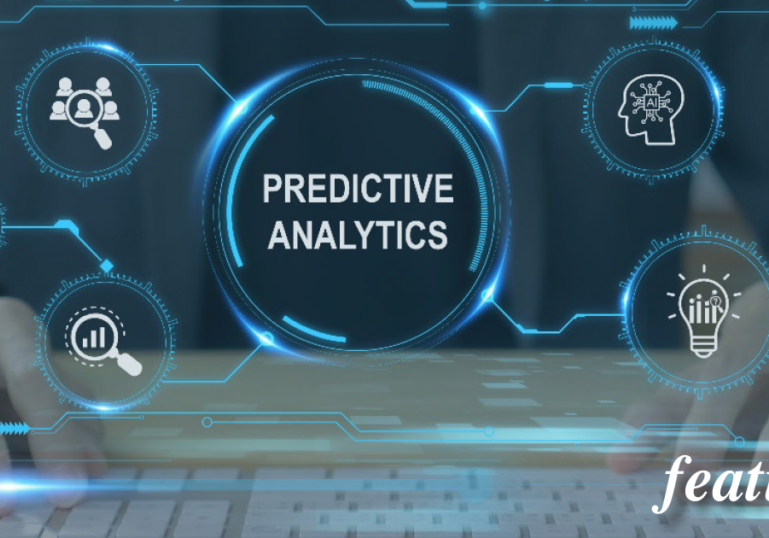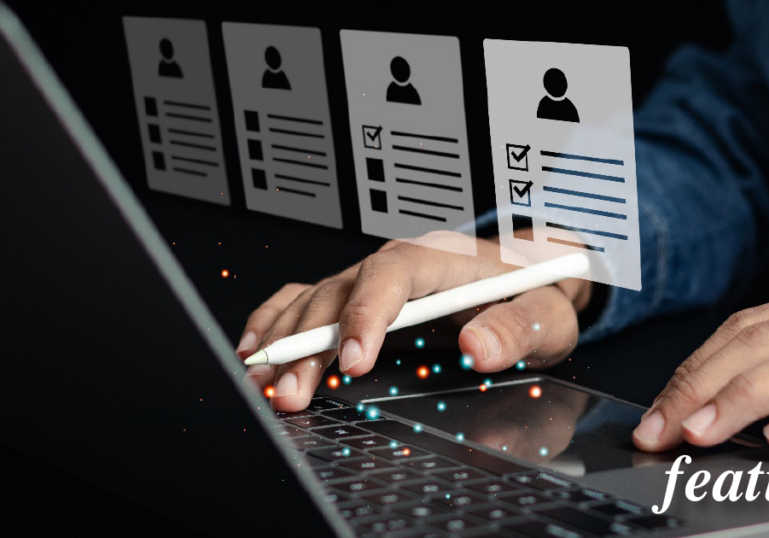We can’t keep pushing it off anymore. For years, AI (artificial intelligence) was a largely academic concept. Soothsayers foretold how it would change the world, but it all seemed hypothetical. That all changed about a year ago when ChatGPT made AI a household term – and a household tool.
As an umbrella term that includes machine learning, deep learning, and natural language processing, AI relies on extensive computing power and massive amounts of data processed by algorithms. Generative AI tools such as ChatGPT that create output using “large language” models are now ubiquitous in our society.
HR tasks like collecting and mining operational data, automating administrative tasks, improving strategies for recruiting and retaining talent, and managing regulatory compliance are all within the capabilities of AI.
What does this new world of AI mean for our work in HR, and how can we best harness it?
How the World is Using AI
This new technology is continuing to fuel workforce transformation. “Generative AI has the potential to change the anatomy of knowledge work associated with occupations that have higher wages and educational requirements than on other types of work,” concludes a McKinsey report1, “augmenting the capabilities of individual workers by automating some of their activities.”
AI’s potential is already being used to solve thorny problems in healthcare, banking, and manufacturing, to automate tasks and processes, form predictions, and make business decisions. The finance sector, for instance, has used AI for years 2, and many companies are beginning to experiment with it.
A 2023 Monster.com poll found that 49% have used AI in the workplace, and a third have used it for advanced tasks like writing code, financial forecasting, or data analysis, while 30% have used it for creative purposes like generating graphics. 68% still think they can perform core tasks of their job better than an AI generator. And, of course, 40% are worried that an AI generator could replace their role or eliminate their position.
But its more widespread adoption is expected to come. A recent survey by Fishbowl3, a professional social network, found that 43% of professionals have used ChatGPT and other AI tools, but covertly. Many employees don’t want their employer to know they are using ChatGPT to support their work. That concern is justified and is a real business risk, as biases, plagiarism, outdated info, and inaccuracies are inherent within generative AI tools. As these roadblocks are inevitably addressed, AI will eventually be less “underground” and more widely embraced.
Given that we are stewards of our employees’ confidential data, it may not be surprising that we in HR are also quite cautious about AI. We must ensure that the data we protect so carefully is not exposed to open AI realms.
Still, there are some quick wins and data-driven insights we can tap with AI to make our lives easier. Many efficiencies in talent planning and retention modeling can readily be implemented with immediate impact. AI can also help HR teams create tailored employee experiences by developing highly contextual content from summary plan descriptions (SPDs)/policies/data, natural language agents to answer personal HR questions and automated career pathing.
How HR Can Use AI for Some Quick Wins
Career development
Of great importance in attracting and retaining talent is the ability to develop a career path that suits and appeals to an employee’s goals. Pre-established career paths and “persona stories” can be fed into generative AI algorithms to give employees and their managers either automated or interactive career development guidance.
Communications
Another time saver is the rapid creation of SPDs. For employers with multiple plan variations for different audience segments and the need to translate them into various languages, generative AI can take an existing template and replicate it quickly. Each variation can embed the particulars necessary for each audience. While verification is still required, the initial drafting of the different versions can be nearly instantaneous.
Communications are always more effective the more tailored it is to the audience. AI can create channel-specific messaging by persona type, in which the system identifies vital persona attributes, tracks message success by these individual attributes, and adjusts the prioritization based on the success of each message. As new users engage with the system, the prioritization of their targeted messaging will have already been predicted by previous users with similar persona attributes who received those messages before.
The machine learning behind AI helps develop and improve self-service support – for instance, through chatbots, text messaging, and interactive voice communication – using natural language across multiple channels.
Assessing workforce needs
AI can help organizations improve their talent acquisition and retention strategies by collecting and analyzing vast information about employees, such as their skills, experience, and performance. Big data can be used to identify top talent and to develop strategies to attract and retain them. It can predict talent attrition by gathering benchmarks based on interest rate and stock price impact on turnover, retirement readiness, and health conditions. Identifying employees at risk of leaving the organization can help HR model programs and communication strategies to boost retention.
A related example is using AI to identify employee segments most likely to retire. A retirement readiness model can be developed based on pension, savings, compensation, and historic retention data to predict voluntary separations. Different levers can be modeled, such as savings plan matches or early retirement windows.
Compensation planning
AI can be used to gather and analyze historical and benchmark data to identify trends in compensation. This information can then be used to develop more accurate compensation plans.
Administration and regulatory compliance
AI can automate repetitive tasks, such as enrollment and claims processing. This optimization can free up time for HR professionals to focus on other tasks. Big data and AI may also identify potential compliance issues and develop strategies to help organizations avoid costly fines and penalties.
Total Rewards
Big data and AI are rapidly changing the way that organizations ensure total reward offers are in line with local market norms. It can benchmark data for local comparison, create DE&I scenarios, and analyze compensation trends. Big data can segment employees into groups based on their needs and preferences. This information can then be used to design personalized total rewards programs more likely to be effective.
So, what is our responsibility with all this data?
If we know someone is in danger of a heart attack, is it our responsibility to alert them? If they are not on the right track to retire, do we intervene? If we can identify a better career path within our organizations, should we guide them? How much support should we, as employers, provide?
There are many roads that HR can follow. We could use all the data we know about an individual to automatically build a total package for them (health, wealth, career), leaving their input out of it. Or we could provide all the data we know about an individual and decision support tools to let them decide the package they want. Another approach would be to let our health care and financial plan vendors handle the data and decision support and keep HR and the employer out of it. Finally, we could let employees input their data into decision support tools to assist them in designing their personalized packages.
Hypothetically, we could combine our “closed” internal health, financial, and career data sets with “open” data outside our organization to find ideal talent, engage them, and guide them. If so, who decides what is shared – the employer, the employee, or both? Should employers use de-identified employee data but identified open data to find new candidates? Should employees have access to “people like me data” to make decisions on HR programs? Should employers give employees access to the data only if they request it? Should employers limit employees’ use of their data in Open AI systems? Should we do it for them?
Taking some first steps
To proactively minimize risk for the organization, there are some basic things we should be doing now between HR, IT and legal:
- Communicate that colleagues should not enter confidential information into publicly accessible AI systems.
- Consider updating relevant information and data policies to include handling rules concerning AI systems.
- Create an AI working group and invite colleagues to submit user experiences to help build a picture of how AI systems could support HR and the business.
- Outline the tasks where publicly accessible AI systems could aid productivity so there is a clear line for employees. Ask an AI system to summarize a specific topic or a sample job description, for example.
- Ensure colleagues considering future projects involving AI or machine learning capabilities and confidential/proprietary information are liaising with IT and legal teams to maintain compliance with legal and privacy obligations.
HR at the forefront
Generative AI is not a fad. The cat’s out of the bag, and efficiencies are showing up everywhere. Adopting this technology in the workplace needs to draw on new skills that must be developed through retraining, risk mitigation, and creative thinking. It will take time for employers to grasp this technology, and it must be executed carefully, thoughtfully, and with the full knowledge of the risks inherent in using AI.
HR isn’t often at the forefront of innovation when using new technologies like AI. And AI requires extra care and feeding to guard against bias and inaccuracies in handling the data that feeds it. But even when used cautiously, it can be a powerful time saver and productivity generator for HR.
ENDNOTES
1 The economic potential of generative AI: The next productivity frontier, Economic potential of generative AI | McKinsey, McKinsey Digital, June 14, 2023.
2 Risks and opportunities: What might AI really mean for your business? Risks and opportunities: What might AI really mean for your business? | Gallagher UK (ajg.com), Gallagher News & Insights, July 23, 2023.
3 70% Of Workers Using ChatGPT At Work Are Not Telling Their Boss; Overall Usage Among Professionals Jumps To 43%, 70-percent-of-workers-using-chatgpt-at-work-are-not-telling-their-boss (fishbowlapp.com), Fishbowl, February 1, 2023.



